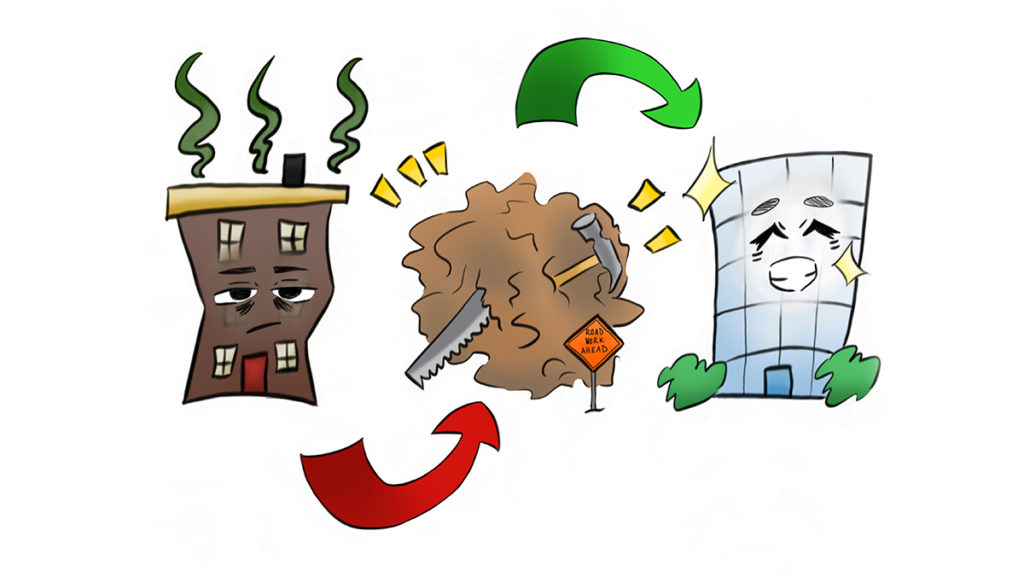For the past few years, Ithaca College has dealt with a handful of issues, including the COVID-19 pandemic. These issues led to stagnation in campus preservation and restoration. Now that the chaos has settled, the campus community will find that there are many long-awaited, tangible changes across campus.
The college has undertaken multiple campus restoration projects at once, including power–washing the Dillingham Center and paving roads across campus. Additionally, the campus’ native ash trees and non-native Australian pines were removed because of an invasive beetle called the emerald ash borer that has killed off many of the trees. For years, the outside of Dillingham has been covered in a grime that has led to the brutalist building — which can already be an eyesore — looking run down and unpleasing to the eye. For a school with a high–ranking musical theater program that is housed within Dillingham, the upkeep of the building did not match the pedestal the theater arts are on. However, the recent cleaning turns Dillingham into a worthy home for the college’s many productions.
The focus on student experience is laudable as Dillingham is a central building on campus and often one of the first buildings prospective students and their families see when they arrive. Incoming students will find a much cleaner, well–kept campus than they would have one year ago. The new glass guardrails by the Dillingham Fountain provide a clean finish to the centerpiece of the campus, replacing the hole-ridden concrete that once stood in its place. Campus community members will also see the Lower Quad tennis courts with a fresh court, not ripped nets and crushed ground.
While the removal of trees around the campus was disappointing, the invasive species made the removal a necessity. The quick action to cut down and remove the trees by the college is a positive sign for the future of campus upkeep and swiftness from the college. Exponential growth of the invasive beetle species could have been catastrophic for the arboreal life on campus and in the surrounding area.
One of the Textor Hall staircases is receiving a full new granite finish, but construction has bled over into the beginning of the fall semester. While the Textor staircase is currently a minor inconvenience to students traversing campus, it will inevitably be safer than before. The crumbling stairs that the current construction will replace were beginning to pose a safety hazard to students walking across wet, icy ground. The new staircase will revitalize the rusted rails and dilapidated stairs to a much safer and convenient standard.
Timothy Downs, chief financial officer and vice president for Finance and Administration, said the college is returning to spending about $15 million on construction across campus. This is up from about $8 million to $9 million during the pandemic. Unfortunately, the dip in construction spending was because of a decrease in the college’s revenue because of COVID-19 campus closures. Seeing the ramp up in spending is a sure sign that the college is returning back to its normal post–pandemic standards.
While students will notice some of the upkeep that has occurred across campus, they will also notice the construction that has not yet been completed. It can be easy to place blame on the college for not being able to complete projects, however, the issue runs deeper than campus maintenance and facilities. Supply chain issues across the country have led to delays in shipments to the college. In addition, rising gas prices over the past few months have also affected the shipment of products as companies will wait until they have a full load before shipping rather than shipping small loads across the country.
Patience with the state of construction on campus will be necessary now more than ever. Once these projects are completed, they will breathe new life into the campus environment, making a far more attractive and far safer space for all that walk its paths.
While it is disappointing for students to arrive on campus and see it turned into a construction zone with empty spaces where trees previously stood, it is refreshing and welcoming to see large and small improvements being made across campus.














